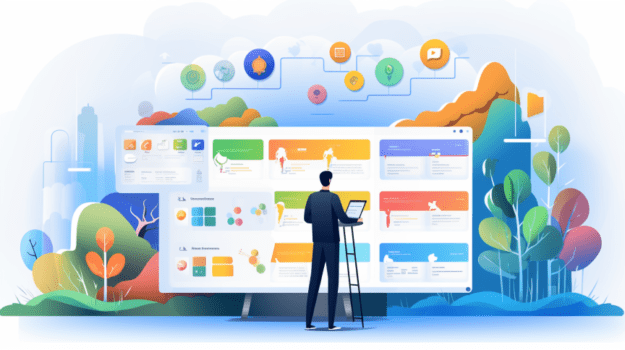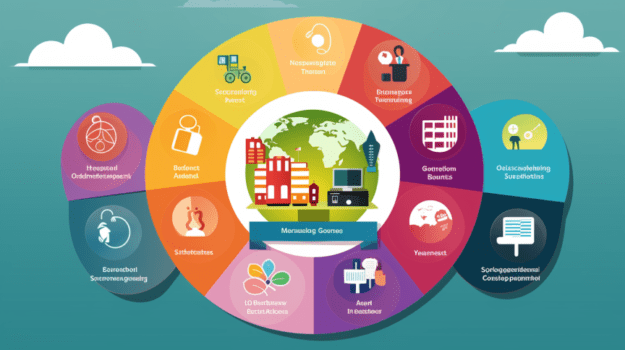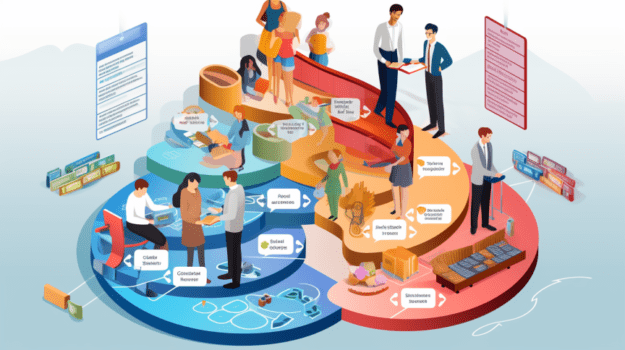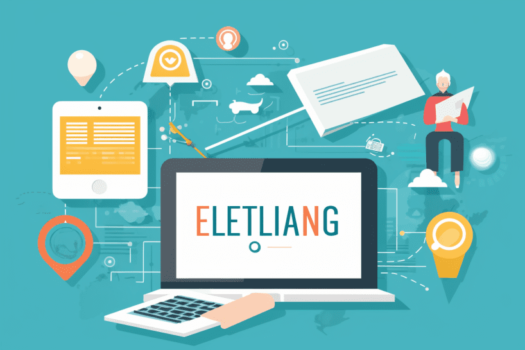Introduction

In today’s digital age, selecting the right Learning Management System (LMS) is crucial for educational institutions. An effective LMS can significantly impact student learning and overall school performance. By providing a centralized platform for course management, collaboration, and assessment, an LMS streamlines educational processes and enhances the educational experience.
What is a Learning Management System?
![]()
An LMS is a software application designed to facilitate the administration, delivery, and tracking of educational courses or training programs. It acts as a virtual classroom, allowing educators to create and manage courses, upload learning materials, and engage in student collaboration. With seamless integration of multimedia tools and interactive elements, an LMS offers educators the flexibility to deliver engaging content in various formats.
Assessing Your School’s Needs

Before diving into the LMS selection process, it is crucial to assess your school’s unique goals and objectives. Engage key stakeholders, including administrators, teachers, and students, to identify their specific requirements and preferences. Conducting a thorough needs assessment will help you align your LMS choice with your school’s vision and ensure a successful implementation.
Features to Consider

When evaluating different LMS options, several key features should be considered:
User Interface and Ease of Use
A user-friendly interface is paramount for an effective LMS. The navigation should be intuitive, allowing both educators and students to easily access course materials and tools. A well-organized layout ensures efficient course management and a seamless learning experience. Additionally, the ability to customize the LMS interface to match your school’s branding enhances the overall user experience.
Course Creation and Management
A robust LMS should provide educators with the ability to create and organize courses effortlessly. Content creation and management tools, such as drag-and-drop editors or rich text editors, simplify the process of delivering engaging lessons. Integration of multimedia elements, such as videos and interactive assessments, adds depth and interactivity to the learning experience.
Collaboration and Communication Tools
Effective collaboration and communication are vital components of a modern education environment. An LMS should offer discussion forums and live chat options to foster student engagement and facilitate peer interaction. Group projects and collaborative learning features encourage teamwork and critical thinking. Moreover, seamless communication channels between students, teachers, and parents foster a strong support system within the educational ecosystem.
Assessment and Grading System
A comprehensive LMS should provide a variety of assessment formats, including quizzes, assignments, and interactive activities. The grading system should be flexible enough to accommodate various grading methodologies while streamlining feedback mechanisms. Integration with a grade book and reporting functionalities ensures efficient tracking and evaluation of student progress.
Compatibility and Integration
To seamlessly integrate an LMS with existing systems, such as Student Information Systems (SIS) or Customer Relationship Management (CRM) tools, compatibility and integration capabilities are crucial. An LMS should support a range of devices, including desktops, tablets, and smartphones, while ensuring compatibility across different operating systems. Moreover, it should offer support for various file formats and external tools to enhance the learning experience.
Data Security and Privacy
In an era of increasing data breaches and privacy concerns, data security and privacy features are paramount when choosing an LMS. Ensure that the LMS complies with relevant privacy regulations, such as the General Data Protection Regulation (GDPR) and the Children’s Online Privacy Protection Act (COPPA). Additionally, robust backup and disaster recovery mechanisms should be in place to safeguard vital educational data.
Technical Support and Training
Reliable technical support is necessary to ensure a smooth LMS experience for all stakeholders. Adequate documentation and training resources should be available to administrators, teachers, and students for efficient LMS usage. A user-friendly help desk and troubleshooting assistance ensure prompt resolution of any issues that may arise.
Scalability
Scalability is an essential feature to consider when selecting a Learning Management System for your school. As your institution grows, so does the number of users and the amount of data handled by the LMS.
The system must be capable of accommodating this growth without compromising performance or functionality. This could mean adding more users, handling larger data volumes, or expanding features as your educational needs evolve.
A scalable LMS also ensures that your investment is future-proof, able to adapt to technological advancements and changes in educational trends. Remember to assess the vendor’s capacity to provide upgrades or updates to the system to accommodate future needs.
Cost Considerations

While cost should not be the sole determinant in LMS selection, understanding the cost structure is essential. Evaluate costs in comparison to features and benefits to ensure a cost-effective solution that meets your school’s needs. Consider both the initial implementation costs and the long-term maintenance expenses. Formulating a budget that accounts for these factors will help you make an informed decision.
Return on Investment (ROI)
Investing in a Learning Management System is a big decision, and it is important to understand the value you’re getting for your money. That is where Return on Investment, or ROI, comes in.
This is not just about dollars and cents, it’s about the bigger picture. Think about the time you will save with streamlined administration, the improved learning outcomes from engaging course content, and the positive impact of easy communication between teachers, students, and parents.
Also, consider long-term benefits like future scalability and updates. Sometimes, an LMS might cost a bit more upfront, but if it delivers more value over time, it could be the smarter choice. Always weigh the potential benefits against the costs to make sure you are getting the best bang for your buck!
User Reviews and Recommendations

Explore reputable sources for LMS reviews and seek recommendations from other schools and educators. Hearing success stories and case studies can provide insights into the practical implications of different LMS options. Consider the experiences and feedback of other users to gain a more holistic understanding of each LMS vendor’s offerings.
Vendor Selection Process

When selecting an LMS vendor, a systematic approach ensures a well-informed decision-making process:
Preliminary Vendor Research
Create a list of potential LMS vendors by exploring their websites, features, and pricing information. Research customer reviews and analyze overall customer satisfaction to shortlist vendors that align with your school’s requirements.
RFP Development and Vendor Evaluation
Develop a comprehensive request for proposal (RFP) that includes your specific needs and expectations. Send the RFP to the shortlisted vendors and evaluate their responses and capabilities. Look for vendors who demonstrate a deep understanding of your requirements and a track record of successful LMS implementation.
Live Demonstrations and Trials
Schedule live demonstrations with preferred vendors to gain firsthand experience with their LMS. Additionally, testing trial versions of the LMS within your school’s environment ensures compatibility with your specific needs and infrastructure.
Contract Negotiation and Final Selection
Once you have evaluated the vendors’ proposals and conducted live demonstrations, negotiation of contract terms and pricing can begin. Carefully review the terms and conditions, negotiate pricing, and consider any additional services offered. Ultimately, make a well-informed decision based on a comprehensive evaluation of each vendor.
Implementation and Training

Successful implementation of an LMS requires careful planning and comprehensive training for all stakeholders. Develop an implementation plan with a specific timeline to ensure a smooth transition. Ensure data migration is executed seamlessly, and integrations with existing systems are thoroughly tested. Provide extensive training resources for administrators, teachers, and students to maximize the LMS’s potential.
Summary and Key Takeaways

Choosing the right LMS is a critical decision that influences student learning outcomes and overall school performance. By understanding your school’s needs, considering key features, factoring in cost considerations, and undertaking a systematic vendor selection process, you can confidently choose an LMS that aligns with your educational objectives.
FAQs

Here are some frequently asked questions regarding LMS selection:
Q1: How long does it take to implement an LMS?
The implementation timeline can vary depending on the complexity of your requirements and the scale of your school. On average, it can range from a few weeks to several months.
Q2: Can an LMS accommodate different teaching methodologies?
Yes, a flexible LMS can accommodate various teaching methodologies, including traditional, blended, and online learning.
Q3: Are there any limitations in terms of user capacity in an LMS?
Different LMS options have varying user capacities. It is essential to choose an LMS that can support the number of students, teachers, and administrators within your school.
Q4: How frequently should an LMS be updated?
LMS updates are typically released periodically to improve functionality, security, and user experience. The frequency of updates depends on the LMS vendor and their development cycle.
Q5: Can an LMS be integrated with other educational software?
Yes, many LMS options provide integration capabilities with other educational software, such as student information systems, content authoring tools, and communication platforms.






